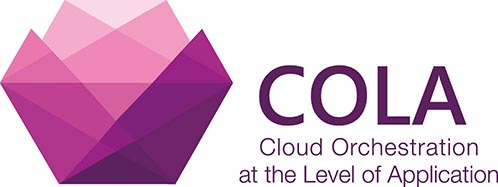COLA project partner Saker Solutions has developed an evacuation simulation with one of their clients, a key UK government organisation, that has a need to study the evacuation of people from one of their facilities / sites. In developing the simulation model it became clear that the model had to be run many times because of the need to compare different evacuation policies / strategies. Moreover, each strategy could be initialised with different sets of starting conditions (personnel at different locations, for example). This gave rise to numerous scenarios to be simulated. Additionally, each scenario also needed to be run for multiple replications to allow for the fact that variance in statistical distributions (for example for walking speed) or the outcome of probabilities would vary between replications. These differences need to be statistically analysed in order to reach statistically valid results / conclusions. The aforementioned factors means that a vast number of simulations need to be run which, using a traditional approach, would extend the time horizon for decision making (whilst the users wait for their simulations to complete). In reality this constrains the number of experiments that can be performed due to the availability of physical resources.
With COLA project partner Brunel University, Saker has developed a high performance computing Grid – SakerGrid. This enabled the computing resources in a desktop grid to be ‘harvested’ with SakerGrid distributing work to idle resources to execute simulation runs in parallel in order to compress the timeframe to obtaining results. Currently the evacuation simulation can utilise SakerGrid. The attraction of COLA is to increase the availability computing power through the use of scalable on-demand resources – a cloud-based version of SakerGrid will enable greater expansion and a significantly greater number of alternative scenarios to be tried / evaluated. This not only reduces the time to run a simulation but also should mean that the quality of decision making is improved by exploring more scenarios and therefore coming up with better decisions that will improve efficiency.
Note that whist the evacuation model is ideally suited to being scaled up to reduce the time taken to run a simulation, other simulation models can also benefit from the on-demand scaling and time reduction. There are therefore benefits for other simulation models / client project that study the performance of other facilities and systems, for example logistics, manufacturing, construction, decommissioning, etc.
This use case will provide users with an ability to either run simulations on their local desktop grid or send the job to the cloud where it will be scaled using on-demand resources so that answers are received within a required time horizon. This has the benefit of advoiding significant capital investment in what would be under-utilised resources (software licences) whilst ensuring that access to such resources can be provided in a timely, cost-effective manner.
The capability to use on-demand cloud based resources in conjunction with SakerGrid will provide an end user with the ability to run more simulation experiments. Moreover, it will also provide the ability to run more replications of each experiment so that the results obtained are statistically valid. This will deliver the following benefits:
- Improved quality of decision making by exploring a wider range of scenarios
- Reduced time to decisions
- Greater confidence in decision making by running more replications:
- Many scenarios
- Strategies
- Starting conditions
- Many Replications
- Agent behaviour / interactions
- Probabilistic decisions
- Robust and cohesive evacuation strategy
- Many scenarios
- Improved realisation of benefits:
- Cost avoidance/reduction
- Capital justification
- Reduced inventory
- Reduced lead-times
Note that these benefits apply to other simulation models as well an evacuation simulation.
At the end of the project Saker would like to have the ability to extend its SakerGrid Client application to allow users to submit jobs to the local grid and/or the cloud. Saker would also like to have the ability to support Microsoft Azure cloud – which is used by UK government organisations to that it can offer cloud based simulation based deliverables to public sector organisations.
The deliverables from the project will be an enhanced SakerGrid system (supporting cloud based on-demand resources), the capability to offer clients / prospective clients a means to run simulations on the cloud.
Ultimately Saker has an aspiration to expand on this capability to capitalise on opportunities for High performance Simulation Analytics for Industry. This will involve the further development of the deliverables that this project will create.
